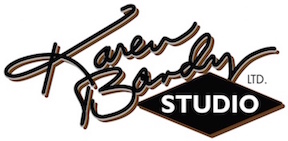Thinking it's time to upgrade your diamond? Couldn't afford the diamond engagement ring of your dreams when you first got married? Maybe it's just time for a celebration of your time together. After all, you've worked hard and stayed together a long time, you deserve to treat yourself to something lasting and meaningful. A diamond sparkles for eternity and shows off your true beauty, and an upgrade to larger size and better cut will shine brighter and bring joy everyday.
Unfortunately there is a lot of confusion on the market today about diamonds. Here are some facts and some guidelines that reputable jewelers are using:
Natural diamond wedding
ring update.
A natural diamond is a mineral formed in very few locations billions of years ago, when the earth was created. Diamond's relative rarity has to do with how they were formed by heat and pressure about 90 miles below the earth's surface, and then brought closer to the earth's surface by volcanic action. Now that the earth has done its part, man takes over putting in many man-hours to extract, cut, grade and distribute to markets worldwide. When one considers the work nature did, and then man's work to extract these gorgeous, timeless beauties, it's no wonder that they are one of the most desired minerals today.
A simulant is a man made substitute for a diamond that has little lasting value. It can be a placeholder in a jewelry piece in a retailer's showcase, or something you might wear on vacation, leaving your valuable possession at home or in your safe deposit box. The most well known, cubic zirconium (CZ) and moissanite (silicon carbide) are pretty and do serve a purpose. But CZ doesn't last, and neither can take heat so if you need prong repairs done they need to be removed, adding to the cost of repairs. Mistakes happen when the customer forgets to tell the jeweler that it's a moissanite and/or the jeweler is inexperienced and hastily takes in a moissanite and applies heat to the ring. Not a fun situation, but one I have avoided!
An artistic diamond upgrade - that's the beauty of custom design from a trusted jeweler.
Synthetics are man-made diamonds, physically similar but not created in nature. That's why they are often called laboratory-created synthetic diamonds. They are not cheap to buy initially and who knows what their value will be down the road? Synthetic diamonds are a commodity, kind of like TV's or fridge, and the price is projected to drop dramatically as more enter the market. At this point I would not recommend buying laboratory-grown diamonds to use in wedding rings; the market is just too new and unknown.
Disclosure in the secondary market (estate jewelry) is problematic, and scams are everywhere today, populated in large part by newcomers to the trade. Jewelry, and diamonds in particular, are close to your heart, so trusting a potential fly-by-night operator has a lot of risk. A trusted jeweler will provide a report stating that the diamond you buy is natural.
Once you select a new diamond, I hope you'll consider a custom ring made by a fine jewelry designer. Then, put your trust in that person to create something unique and beautiful just for you. I'll work with you to create that beautiful engagement ring, wedding ring, or anniversary ring set with a beautiful diamond or colored gemstone, the ring of your dreams. I'm here to help you own something unique, natural and beautiful ... just like you.


